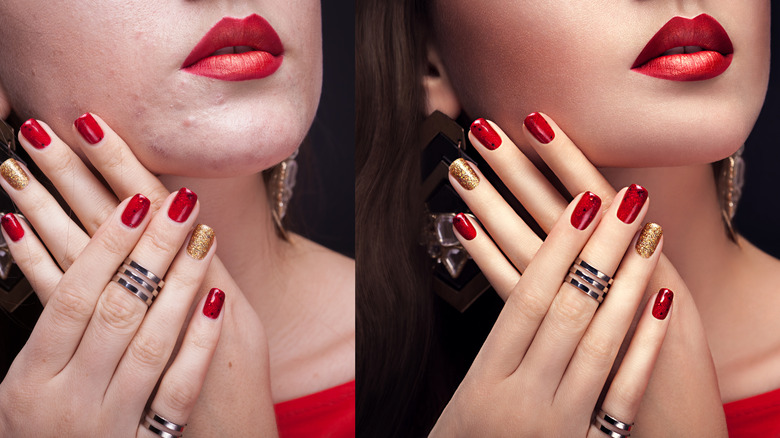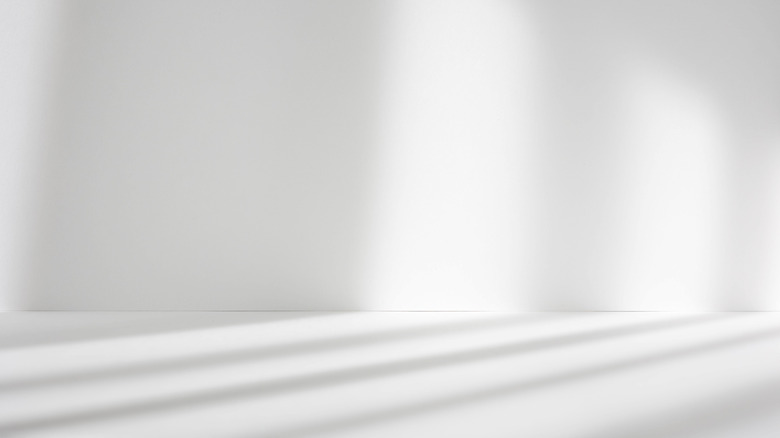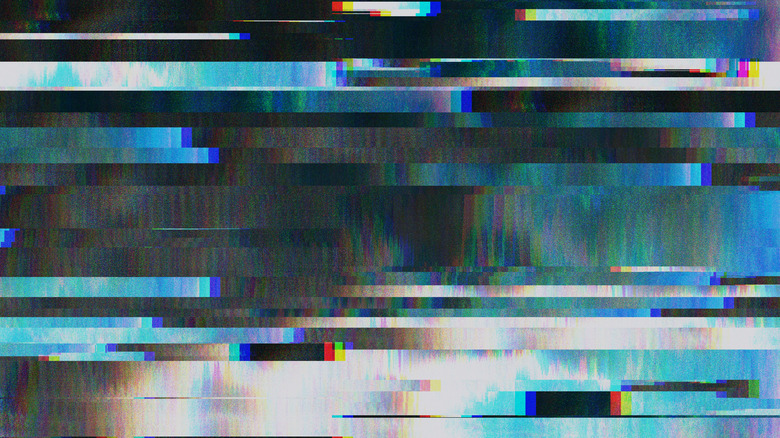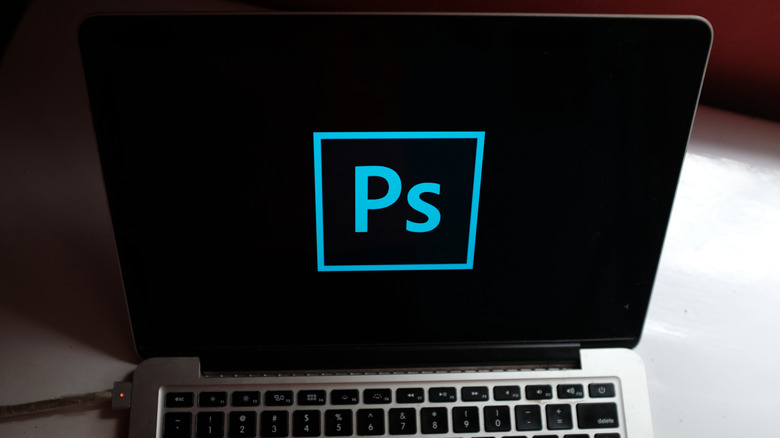How To Tell If A Photo Has Been Photoshopped
In the world where everyone has a camera attached to their phone, we are surrounded by photos and videos. Many have the potential to be doctored. With social media's insistence that users paint their lives as flawless, photos need to be just that. This does, of course, present issues for people who are not in the loop about how photos and videos get edited. Doing so can create unrealistic standards that nobody can actually achieve, which can be damaging to a viewer's self esteem.
For this reason, it is important to be able to tell when something is simply well-edited or doctored instead of being truly flawless. Many refer to this as an image being "photoshopped," however there are plenty other programs besides Adobe Photoshop being used today to edit images, including a number of apps. Here are a few different ways you can tell if an image you're seeing has been altered.
Look at light and shadows
If an image has been edited unskillfully, one easy way to tell is to look around the photo for oddities in the surroundings. One aspect many photo editing amateurs don't often pay attention to is the impact it can make on shadows. If something has been edited, and the shadows or light don't seem to be falling correctly on the subject or in the background, there's a good chance (unskilled) editing has taken place, according to Electrons.
If a shadow doesn't match the outline of a subject, or if it's in the wrong place in relation to it, that can be another big indicator. Photos taken in the evening while there is still sunlight cast longer shadows than earlier in the day, and you'll also want to make sure the angle of the shadow matches where the sun would be at in the sky. Sometimes, there also won't be any shadow visible at all when there should be, which is an easy way to tell if something has been added in to a photo.
Check for distortions
Another way to check for clear signs of photo editing is by zooming in on the pixels. When images are altered, this often causes plenty of distortions to take place within it.
First, if the edges of a subject seem distorted or are too stark against the background, it's possible they have been artificially added to the photo. Something else to look for are artifacts. These are pixels that may pop up in an area where they don't seem to belong. For example, some random dark pixels spotted among an otherwise bright background. If there's no natural reason these pixels would show up there, it's probably because something was changed. One last sign to look for is unnatural smoothness in a photo with a single solid color. This could mean something was painted or blended over.
Check the EXIF data
A very effective way to see if an image has been altered is to look at its EXIF data, according to Adobe. This is information about the image that is saved when a photo is taken. When viewing this data, you can see some information about the settings used on the camera taking the photo. For example, you may notice the aperture, shutter speed, ISO, and more. If you're knowledgeable about photography, this data can tell you some things about how the photo should look. For example, if the image in question was taken with a slower shutter speed, you should expect moving objects in the photo to appear with more motion blur.
The EXIF data will also list if a program was used with the image, including photo editing programs like Photoshop. This is a guaranteed way to confirm if a picture has had any alterations made, although it's not the best way to tell specifically what changes were made.



